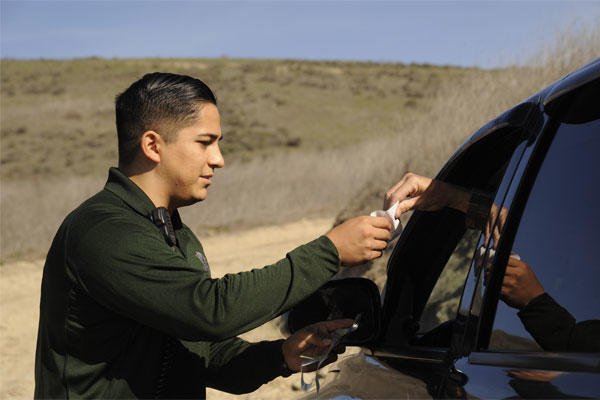VANDENBERG AIR FORCE BASE, Calif. -- Staff Sgt. Michael Vera, a 30th Security Forces Squadron conservation officer, slowly scattered corn chips on the ground leading to the entrance of a rectangular-shaped cage.
Next he re-checked the spring-loaded pressure plate, ensuring that any weight would close the door and catch his quarry. When he was satisfied that both door and pressure plate were functioning, he took another handful of corn chips and tossed them into the back of the cage.
"Raccoons like chips," he said.
When he was finished he gave a half smile and looked at the set trap.
On a base full of high tech equipment housed in classified buildings, the last thing people want is a nest of raccoons moving in. The conservation team catches the animals that need relocation and releases them to less occupied regions of base.
The 10-man team of conservation officers at Vandenberg Air Force Base, California covers the area on four-wheeled vehicles and horses, ensuring the security and safety for the base's human and animal residents.
"We enforce federal, state and local fish and game laws as well as enforcement of natural and cultural resource laws throughout the 99,600 acres, and 43 miles of coastline," said Tech. Sgt. Brandon Mitcheltree, the 30th SFS NCO in charge of conservation. "We also protect over 2,500 archeological sites and aid state fish and wildlife officers when needed."
With the many types of hunting offered on base, such as duck, quail, deer and pig, the conservation department came up with new ways of maintaining hunter safety in the unpredictable terrain.
"We have a new system for hunters where they will check out to an actual area and they have to physically come back and check in," Vera said. "If that hunter doesn't come back we know what area they are in and can set up sweeps and find them."
Aside from making sure that hunters are safe, the conservation officers provide protection for the numerous animal habitats.
"There are 18 endangered and threatened species and their habitats on base," Mitcheltree said. "One of these species everyone knows well is the Western Snowy Plover. We patrol their nesting habitat on the base beaches and have the unique opportunity to use the only active military working horse program in the Air Force for the job."
During shuttle launches, Vandenberg takes advantage of the conservation officer's terrain expertise and mobility. The team conducts area sweeps to ensure no one remains in the effected zone during a launch.
"We have the means to go virtually anywhere on base,” Vera said. “We have the horse patrol so we can jump on horseback and get into tightly crammed areas that are inaccessible to vehicles. We also cut off all hunting in the vicinity of a launch 72 hours prior and make sure that there are no personnel in the area."
Roaming the hills and valleys of Vandenberg for hours on end creates for some long days. But it also allows the conservation team to meet and converse with hunters, hikers and bikers.
"Having this unique job opportunity allows us to be outdoors, interact with hunters, anglers and recreationalists," Mitcheltree said. "Our duties and responsibilities are extensive and time consuming, but we enjoy the challenges because it doesn't feel like a typical 'job'."
Vandenberg AFB is unique for multiple reasons; the conservation team is a demonstration of that fact.
"Patrolling the beach on horseback is something that not a lot of people can say they do in the Air Force, especially being in security forces," Vera said. "When people ask, 'what did you do today?' I say, 'I rode a horse on the beach while I was enforcing the law'."


























